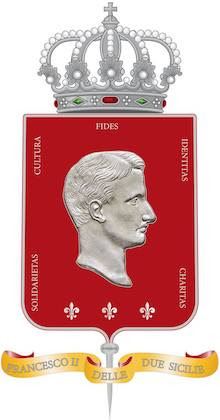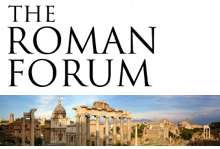 |
Reading Sebastian Morello's Unto the Ages of Ages on the journey,
I picked up a copy of Giandandrea de Antonellis' Carlismo per Napolitani |
Re Nasone See Part 1, Part 2Before leaving for Rome, I asked my friend Livia—Roman, radiant, and blunt—what the Eternal City was famous for. “Nothing,” she said. “We have everything, so nothing is special.” Then, reconsidering, she added: “Ah sì—the nasoni!”She explained that these small cast-iron fountains from the late nineteenth century, scattered throughout the city, are called nasoni because their curved spouts resemble the famous Roman nose. To illustrate, she turned in profile and displayed her own gorgeous, aquiline honker, a living monument to the city’s character that could have been sculpted by Bernini himself. I was instantly enthralled.From that moment on, I made it my mission to drink from every nasone I passed. Writing her about my journey, Livia teasingly crowned me Re Nasone—King Big Nose—after King Ferdinand I of the Two Sicilies. I accepted the title with pride and hydration. Sadly, I couldn’t find a miniature fountain to bring home, but she promised to gift me one crafted by her sculptor friend.Tired of cheap magnets and keychains, I brought back beautiful stationery, postcards from some of the churches we visited, and, of course, rosary beads blessed by the Pope. Real souvenirs, like real pilgrimages, are not merely purchased—they’re bestowed. |
| (Above & below) Nasoni |
 |
(L) Covered in graffiti, I spotted a portrait of Totò. (R) I also
found a flyer for the Madonna di Gulfi near my hotel |
 |
| (L) Keystone with bleeding pelican. (R) Interesting door knocker |
Roman Nights
Down the block from our hotel was a square that served as a farmer’s market by day and a gathering place for Roman youth by night. The transformation was seamless: fruits and vegetables replaced by music and laughter, baskets by wine glasses, and the smell of flowers and herbs giving way to perfume and cigarette smoke.
They ate, drank, and flirted—not like the overexposed youth of New York City, but with a graceful sensuality that still respected the mystery of the flesh. Some had tattoos and piercings, yes, but nothing like the excessive mutilation we see back home. The men were clean-cut and confident; the women were fashionable, modest, and exuded an effortless sexiness. They knew that allure depends not on exposure, but suggestion.
Watching them, I thought of how Rome remains eternally young. Each generation reinvents beauty, but always within the grammar of civilization. Decorum and desire—two sides of the same coin, worn smooth by centuries of handling.
 |
(Above & below) La Madonnelle di Roma.
(R) Fountain with Papal coat-of-arms |
Epilogue: Homeward MeditationsAs the plane climbed above the clouds, I felt the strange melancholy that follows every pilgrimage: the sense that you are leaving a part of yourself behind, even as you bring something home.I thought of Rome’s many Madonnelle, Marian street shrines adorning corners and walls; of the trickling nasoni whispering in side streets; of the churches where we prayed; of the laughter of my friends at dinner; of the Holy Doors swinging open to eternity.Rome, like faith, is never finished—it only waits to be rediscovered.And so I closed my notebook, then my eyes, and dreamt of the city that forever turns indulgence into devotion, and devotion into joy.~ By Giovanni di Napoli, October 28th, Feast of the Holy Apostles Simon and Jude |
| Saint Peter's Basilica at night |
 |
| Chiesa Santa Maria in Traspontina |
 |
| High altar in the Chiesa Santa Maria in Traspontina |
 |
| Our Lady of Mt. Carmel in the Chiesa Santa Maria in Traspontina |
 |
| Chapel of Santa Barbara and the ceiling in the Chiesa Santa Maria in Traspontina |
 |
| Chiesa Sant’Agnese in Agone |
 |
| Chiesa Sant’Agnese in Agone high altar and San Sebastian chapel |
 |
| Reliquary and chapel of St. Agnes in the Chiesa Sant’Agnese in Agone |
 |
| Chapel of Sant'Eustachio in the Chiesa Sant’Agnese in Agone |
 |
| Chiesa di San Salvatore in Lauro and high altar |
 |
| San Pio chapel at the Chiesa di San Salvatore in Lauro |
 |
| St. Charbel shrine at the Chiesa di San Salvatore in Lauro |
 |
| San Giuda Taddeo chapel in the Chiesa di San Salvatore in Lauro |
 |
| Parrocchia S. Maria del Rosario, high altar and Our Lady of the Rosary |
 |
| High altar and St. Lucy chapel in the Chiesa Santa Lucia del Gonfalone |

































